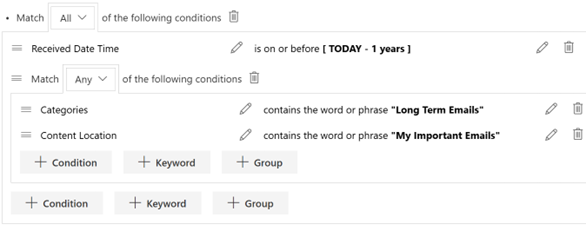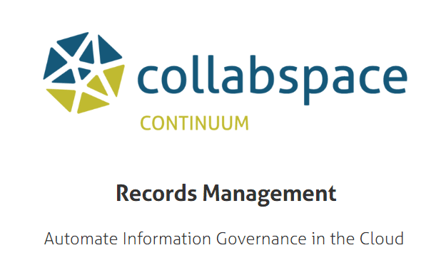
Image courtesy of Pexel.
Whether facing issues in demand or requirements to follow new stringent regulations, the oil and gas sector is no stranger to challenge and necessity to adapt.
2020 in particular will present economic volatility for this industry. The Oil & Gas Journal called out disruptions to demand and rapid price swings in lieu of COVID-19. The International Energy Agency also raised concern for a weaker transport fuel demand due to pandemic, global relations, and energy transitions.
With so many elements out of oil and gas companies’ control, adaptation and transition will be required to address these challenges and remain competitive.
As stated in the AI Monitor: “COVID-19 could cause severe societal and economic disruptions for perhaps a year or longer; the oil sector will have to learn to become more lean and agile to attempt to survive in the new Darwinian environment.”
Moving forward, achieving this agility to remain competitive can be done if oil & gas companies:
- Optimize their operational and business processes
- Ensure business continuity and compliance during this time
- Prepare for organizational shifts such as acquisitions or mergers
- Improve their organizational decision-making
These points seem like no easy feat. However, oil and gas companies can take something they have plenty of- something that has often presented their greatest challenges- and use it instead as a tool to tick each of those four measures.
Curious?
We’re talking about their data. GEO ExPro stated that handling large volumes of unstructured, increasingly real-time data has posed difficulties for this sector. But when harnessed properly, this content can offer great value by streamlining business operations and offering insights to improve business-decision making.
How can terabytes of content across an organization be utilized to make companies as lean and agile as possible? This is where the data lake comes in (what’s a data lake, you ask? Check out our article breaking it down).
We’ll use five pain points commonly experienced by the oil and gas industry to show how investing in a data lake solution enables organizations to use their information in a way that optimizes processes, ensures compliance, aids during transitions such as acquisitions/mergers, and helps gather insights for more informed business decision-making.
Pain Point 1: A lot of data types, in a lot of places
The oil & gas industry is very data driven and technologically reliant, and these organizations have to track more than just oil. A lot of the business decisions, for example, are weighted on land files and the years’ worth of information about these projects.
We’re talking content outlining road use, equipment details, service jobs involved, land leases and royalty contracts. This accumulates into mass amounts of both structured and unstructured data: everything from unique well identifiers (UWIs) for tracking purposes to details around which companies have interest in the land. All of this information must be accessible across teams for field operations purposes, compliance regulation and more.
Many organizations have taken steps to digitize this content for quick access, however, departments often work with systems that have been purpose-built. This silo-ed approach comes with a lot of drawbacks when information is needed across teams, limiting visibility and demanding time when searching for content across and organization.
Data Lake Solution: Stream all content types into one source
Data lakes are built for the purpose of storing large volumes of content, and have multiple source connectors to backup both structured and unstructured data. With the ability to handle all properties types, including raw, unrefined data, organizations can stream information from their purpose-built systems into the data lake, consolidating their big data to eliminate the need to search across systems. By selecting an intelligent data lake solution, such as Collabspace, all content is auto classified and auto indexed. This provides users with advanced search capabilities and search templates so those with proper permissions can rapidly surface and share their information.
Pain Point 2: Challenge managing these records
This massive amount of information not only needs to be discoverable and accessible to workers in the field and the office, but it must also be properly managed. All land records and files of multi-year projects, for example, need to be properly stored, secure, and accessible throughout the remainder, and at times for several years after, a drilling project has ended. Once the content lifecycle approaches its end, content should be reviewed and disposed as appropriate to remain compliant.
Data Lake Solution: Automated and compliant end-to-end records management
To avoid a ‘data swamp scenario’ where data gets lost in consolidation, it’s once again critical to select a data lake tool where content is easily searchable and properly managed. Streaming content into a solution such as Collabspace offers auto-classification and auto-categorization capabilities so that everything ends up under the appropriate automated document lifecycle workflows. Along with lifecycle automation to ensure proper retention periods, features such as event-based case management, content review lists, and audit trails streamline processes like legal holds and disposition review.
With these capabilities, RM compliance is automated in the background so users can continue their day-to-day without interruption.
Need more compliance tips? Check out our RM Compliance Checklist.
Paint Point 3: Following industry regulation
Along with ensuring organizational RM compliance, it’s still as important as ever to maintain compliance with energy record keeping requirements set by government and industry regulators. Whether it’s land lease information for a landowner rights issue, or drilling records to track development activity for environmental purposes, all the content should be surfaced quickly so organizations can swiftly respond to any record requests.
Data Lake Solution: rapidly surface content for request response
With all information backed up and easily searchable in the data lake solution, users can search across the organization's content rapidly and export this data in bulk to respond to any regulatory requests. User permissions can easily be set according to the organization’s emergency response plan to mitigate any risk and ensure that regulators are responded to in real time.
Pain Point 4: Lengthy mergers and acquisitions
With the current volatility, there will be transitions in the form of acquisitions and mergers as companies adapt at this time. An organization’s information is critical during these deals. Everything from having key operations metrics ready to show potential buyers, to providing overview of existing records management practices and policies, to transitioning/merging data between two organizations.
If large volumes of data are stored across various repositories and there are no good management practices in place, the time it takes to gather and present necessary content can slow down deals, and consolidating data between companies is a lengthy process.
Data Lake Solution: Highly scalable for quick information sharing and consolidation during deals
The data lake is a centre where all information can be retained, managed, accessed from one place. Pre-acquisition, this allows those divesting to easily share organizational data pertinent to the deal. They can even set permissions so those buying or considering a merge can access and view these details themselves to streamline the selling process.
Post-acquisition or merger, when records and information need to be successfully combined, the data lake's scalability and flexibility becomes incredibly useful. Data lakes are able to grow and scale with organizations, meaning that organizations coming in or taking over can stream in their own data and integrate business and records management processes.
Pain Point 5: Value is not being extracted from the data
As was mentioned, all of these records: leases, HR contracts, or scanned images of WUIs, play a part in the business processes and decisions. But this data can be used for more than just basic operations and ensuring compliance. By extracting data and running analytics: organizations can gather insights to optimize their processes. However, using the standard, silo-ed approach for big data, organizations miss the opportunity to truly extract the potential value.
Data Lake Solution: Input data, extract for value and insights
With their ability to leverage large volumes of data consistently with algorithms, data lakes provide users the ability to drive some real time analytics. Searching and export whatever content type from the Collabspace data lake, organizations can run data models to see patterns and gather insights on how to improve their operations on the field and in offices.
For example, running a data model on previous equipment maintenance can forecast for improved maintenance schedules to optimize business continuity and save equipment repair costs. This is just one situation where data can provide insights, but there are so many more opportunities for oil and gas companies to extract and benefit from their data insights.
In conclusion... use organization data to optimize and improve
In these volatile times, oil and gas can use something they have plenty of as a tool: their data. By bringing all of their structured and unstructured content from across systems unto one secure data lake platform, they can remain competitive by ensuring business continuity and efficiency. End-to-end document lifecycle automation features will ensure that records are properly retained, accessible, and compliant.
Teams will also be able to easily access their data to improve safety, optimize process and save on repair and litigation costs. This also supports during changes to the organization such as acquisitions and mergers by being able to quickly provide to information needed, and to easily consolidate organizations' data. And last but not least, this information can be exported into data model tools for analytics that provide organizations with the insights needed to make smart business decisions with where they want to go next.
Want more information? Check out our webpage for more information about benefits of the Collabspace data lake for oil and gas. Download our brochure, or contact us with how the Collabspace data lake can address pain points and optimize your business operations.
![]()





